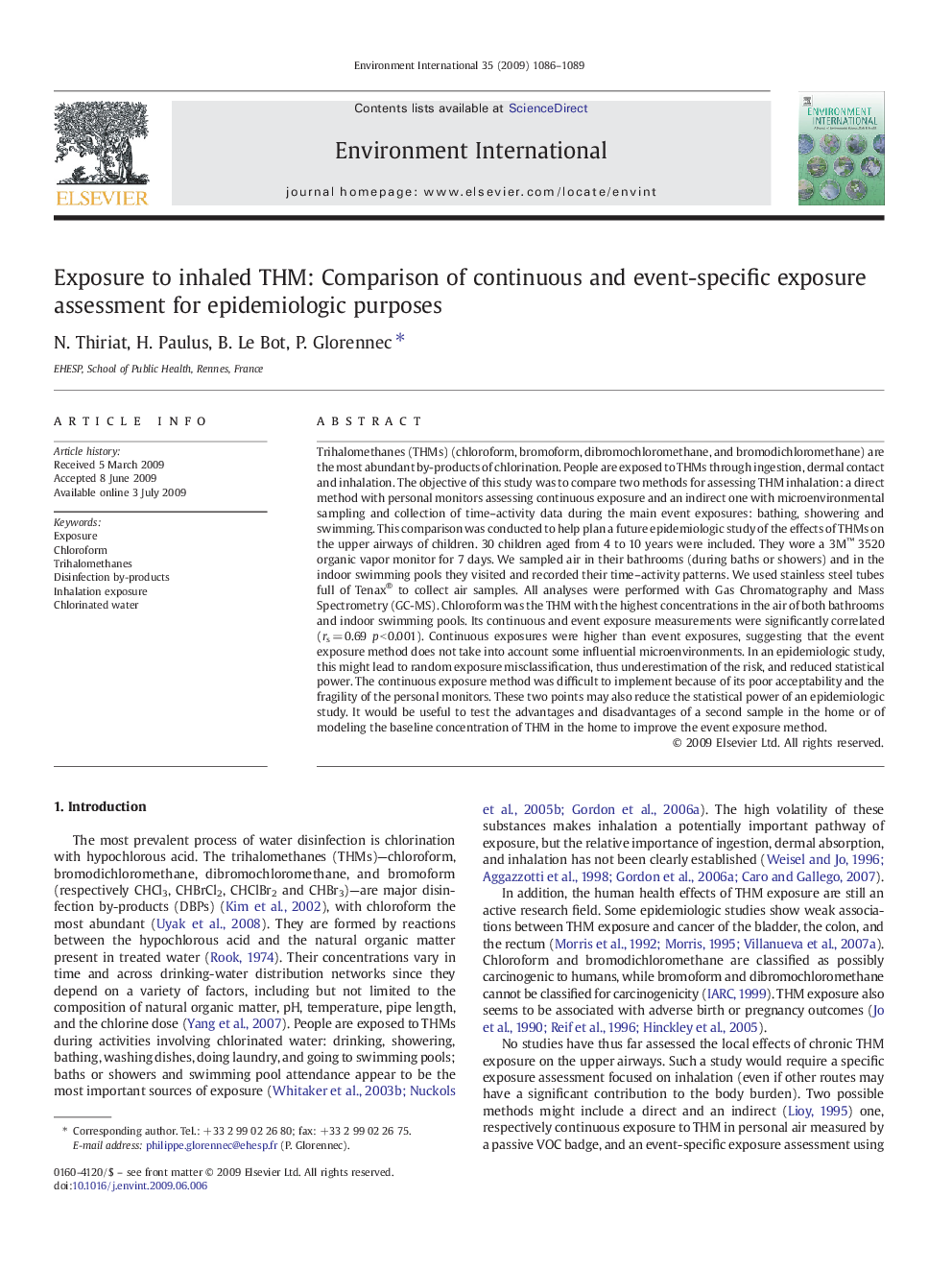| Article ID | Journal | Published Year | Pages | File Type |
|---|---|---|---|---|
| 4423893 | Environment International | 2009 | 4 Pages |
Trihalomethanes (THMs) (chloroform, bromoform, dibromochloromethane, and bromodichloromethane) are the most abundant by-products of chlorination. People are exposed to THMs through ingestion, dermal contact and inhalation. The objective of this study was to compare two methods for assessing THM inhalation: a direct method with personal monitors assessing continuous exposure and an indirect one with microenvironmental sampling and collection of time–activity data during the main event exposures: bathing, showering and swimming. This comparison was conducted to help plan a future epidemiologic study of the effects of THMs on the upper airways of children. 30 children aged from 4 to 10 years were included. They wore a 3M™ 3520 organic vapor monitor for 7 days. We sampled air in their bathrooms (during baths or showers) and in the indoor swimming pools they visited and recorded their time–activity patterns. We used stainless steel tubes full of Tenax® to collect air samples. All analyses were performed with Gas Chromatography and Mass Spectrometry (GC-MS). Chloroform was the THM with the highest concentrations in the air of both bathrooms and indoor swimming pools. Its continuous and event exposure measurements were significantly correlated (rs = 0.69 p < 0.001). Continuous exposures were higher than event exposures, suggesting that the event exposure method does not take into account some influential microenvironments. In an epidemiologic study, this might lead to random exposure misclassification, thus underestimation of the risk, and reduced statistical power. The continuous exposure method was difficult to implement because of its poor acceptability and the fragility of the personal monitors. These two points may also reduce the statistical power of an epidemiologic study. It would be useful to test the advantages and disadvantages of a second sample in the home or of modeling the baseline concentration of THM in the home to improve the event exposure method.
